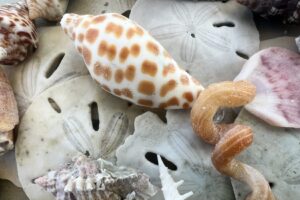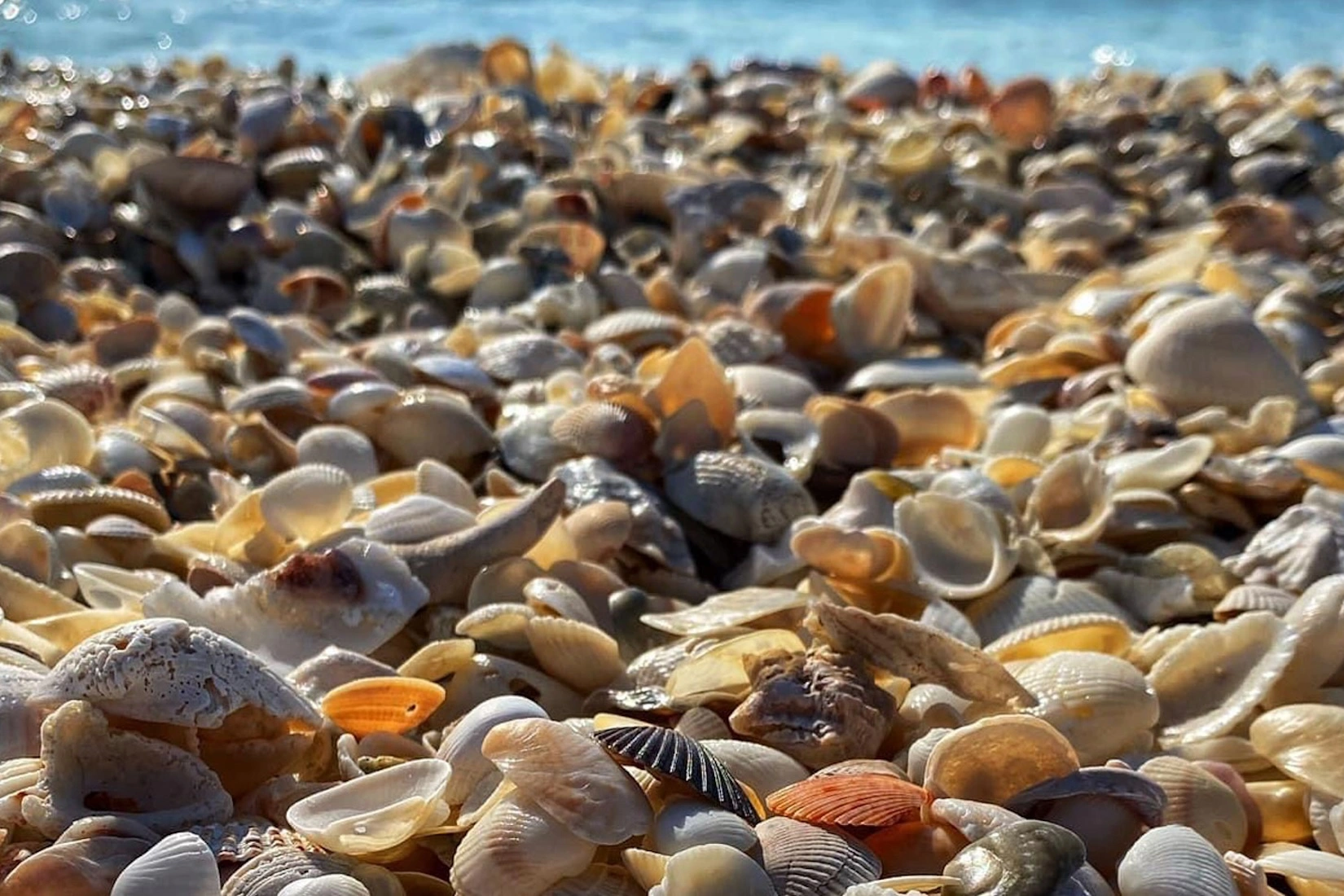How Do Shells Come About? Discover the Fascinating Process
Have you ever strolled along the beach, marveling at the myriad of shells scattered across the shore? With their intricate patterns and vibrant colors, these natural treasures often leave us wondering: What are shells? Shell formation is a fascinating journey through marine biology and geology. Understanding it enhances our appreciation of these remarkable structures and deepens our connection to the marine ecosystem.
 Shells are primarily formed by marine mollusks—creatures like clams, oysters, snails, and scallops. These animals secrete calcium carbonate from their mantle, a specialized tissue that forms the shell’s outer layer. Over time, the calcium carbonate hardens and accumulates, creating a protective barrier for the mollusk. This process is continuous, with the shell growing in layers as the animal ages.
Shells are primarily formed by marine mollusks—creatures like clams, oysters, snails, and scallops. These animals secrete calcium carbonate from their mantle, a specialized tissue that forms the shell’s outer layer. Over time, the calcium carbonate hardens and accumulates, creating a protective barrier for the mollusk. This process is continuous, with the shell growing in layers as the animal ages.
Beyond their beauty, shells play a crucial role in the marine ecosystem. They provide habitats and protection for various aquatic organisms and contribute to forming sandy beaches and coastal landscapes. Moreover, shells offer insights into the health of marine environments and the impacts of climate change.
Book Your Shelling Tour Online today to witness the marvels of shell formation and explore the diverse marine life of the 10,000 Islands. Our expert guides at Florida Island Tours will take you on an unforgettable journey through Marco Island’s vibrant marine ecosystem.
Biological Process of Shell Formation

The mantle secretes proteins and minerals, primarily calcium carbonate, which crystallize to form the shell. When the mollusk is in its larval stage, it begins with forming a small, initial shell or ‘protoconch’. As the mollusk grows, the mantle continuously deposits new layers of calcium carbonate, expanding and thickening the shell.
Interestingly, the composition and structure of the shell can vary significantly among different species. Some mollusks produce shells with smooth, glossy surfaces, while others generate rough, ridged exteriors. The variation depends on the specific proteins and environmental factors influencing the shell formation. For instance, the availability of calcium in the water, the water’s pH level, and the temperature can all impact the shell’s development.
Moreover, the coloration and patterning of shells are influenced by pigments secreted by the mantle. These pigments can create stunning, often symmetrical designs unique to each species. Combining biological and environmental factors results in the incredible diversity of shells found in marine habitats.
Understanding the biological process of shell formation illuminates the complexity of marine life and underscores the importance of preserving healthy marine ecosystems where these processes can continue to thrive.
Different Types of Sea Shells

- Gastropods: These are typically the spiral-shaped shells of snails and slugs. They can range from the tiny, delicate shells of micromollusks to the large, sturdy shells of conchs and whelks. The spirals can be tight or loose, and the shells often have intricate patterns.
- Bivalves: Found in clams, oysters, and mussels, bivalve shells consist of two hinged parts, or valves. They are usually symmetrical and can be smooth or ridged. They often have a pearly interior, produced by the same process that creates pearls.
- Cephalopods: Though most modern cephalopods like octopuses and squids have lost their shells, some, like the nautilus, still possess beautifully spiraled shells. These shells are divided into chambers, which the nautilus uses to control buoyancy.
- Tusks: Scaphopods produce tubular shells resembling tiny elephant tusks. They live buried in the sand and use their shells to anchor themselves.
- Chitons: Chitons have unique shells composed of eight overlapping plates, allowing them to cling tightly to rocky surfaces. These shells provide excellent protection while enabling flexibility.
Each type of shell serves not only as a home and protection for its inhabitants but also as a record of the organism’s life and the environment in which it lived. Studying these shells, known as conchology, offers valuable insights into marine biology and the health of our oceans.
Environmental Factors Influencing Development
The development of shells is a complex process influenced by various environmental factors. Understanding how these factors affect shell growth can provide insight into marine ecosystems’ health and mollusks’ adaptability. Here are some key ecological influences:
- Water Temperature: The temperature of the water plays a crucial role in shell formation. Warmer waters can increase the metabolic rates of mollusks, leading to faster shell growth. Conversely, colder waters can slow down this process. However, extreme temperatures can also lead to stress and malformations in shells.
- Salinity Levels: The salt content of the water affects the availability of calcium carbonate, the primary building block of shells. Mollusks tend to have thicker and more robust shells in areas with higher salinity. In contrast, low salinity can lead to thinner, more fragile shells.
- pH Levels: Ocean acidification, caused by increased CO2 levels, can lower the pH of seawater, making it more acidic. Acidic conditions can dissolve calcium carbonate and hinder shell formation, weakening shells and increasing predator vulnerability.
- Availability of Nutrients: Nutrient-rich waters support the growth of phytoplankton, which serves as food for many mollusks. A higher availability of nutrients can promote healthier and faster shell growth. Conversely, nutrient-poor environments can stunt growth and lead to smaller shells.
- Pollution: Chemical pollutants and heavy metals can accumulate in the water, negatively affecting mollusk health and shell development. Pollutants can interfere with the mollusk’s absorption of calcium carbonate, leading to deformed or brittle shells.
- Predation and Competition: The presence of predators and competition for resources can influence the thickness and strength of shells. Mollusks in high-predation areas often develop thicker, more robust shells as a defense mechanism.
By studying these environmental factors, scientists can better understand marine mollusks’ challenges and develop strategies to protect these vital organisms. The health of shell-forming species is a key indicator of the overall health of marine ecosystems, making their study crucial for conservation efforts.
The Role of Shells in Marine Ecosystems

- Habitat Formation: Shells provide essential habitats for marine organisms, including algae, sponges, and small invertebrates. Over time, these shells accumulate and form complex structures such as oyster reefs and coral beds, which offer shelter and breeding grounds for various marine life.
- Water Filtration: Many shell-forming organisms, such as oysters and clams, are filter feeders. As they feed, they filter out plankton, suspended particles, and even pollutants from the water. This filtration process helps maintain water quality and clarity, benefiting the ecosystem.
- Carbonate Cycling: Shells primarily comprise calcium carbonate, a vital component in the ocean’s carbon cycle. When shells dissolve or decompose, they release calcium carbonate into the water, regulating pH levels and buffering against ocean acidification.
- Food Source: Shells and the organisms that inhabit them serve as a crucial food source for predators, including fish, birds, and marine mammals. This predation helps regulate population dynamics and ensures the stability of marine food webs.
- Shoreline Protection: Accumulations of shells and shell fragments help protect shorelines from erosion. By forming natural barriers, they dissipate wave energy and stabilize sediment, preserving coastal habitats and preventing land loss.
- Nutrient Recycling: Decomposing shells releases essential nutrients into the marine environment, promoting the growth of phytoplankton and other primary producers. This nutrient recycling supports the base of the marine food web and fosters a thriving ecosystem.
Understanding the multifaceted role of shells in marine ecosystems highlights their importance beyond mere biological structures. They are integral to the health, stability, and diversity of ocean habitats, making their preservation a priority for conservation efforts.
Human Interaction with Sea Shells
Humans have long been fascinated by shells, and our interaction with them spans cultures, periods, and geographies. Shells have played various roles in human life, from practical uses to cultural significance:
- Ornamental and Decorative Uses: Shells are often used in jewelry, home decor, and art. Their intricate patterns and vibrant colors make them popular for crafting beautiful and unique items. Ancient civilizations such as the Egyptians and the Greeks valued shells as symbols of wealth and beauty.
- Economic Impact: The shellfish industry is a significant economic driver in many coastal regions. Harvesting clams, oysters, and other shellfish provides livelihoods for countless communities. Additionally, shells are sometimes sold as souvenirs or used in commercial products like calcium supplements and abrasives.
- Scientific Research: Shells offer valuable insights into past and present marine environments. Researchers study shell composition, growth patterns, and distribution to understand climate changes, ocean health, and the impacts of human activities on marine ecosystems. This scientific knowledge is crucial for developing conservation strategies.
- Cultural and Spiritual Significance: In many societies, shells are culturally and spiritually significant. For instance, cowrie shells were once used as currency in Africa, while certain indigenous peoples view shells as sacred objects in rituals and ceremonies. Shells symbolize connection to the sea and are often associated with fertility, protection, and prosperity.
- Recreational Activities: Shell collecting is a popular hobby for many beachgoers. It provides an opportunity to connect with nature, learn about marine life, and appreciate the beauty of the natural world. Responsible shell collecting can be an enriching and educational activity where live organisms are not disturbed.
Our interactions with shells reflect their multifaceted value and our deep connection with the marine environment. To explore these fascinating aspects firsthand, Book Your Tour Online and embark on an unforgettable journey with Florida Island Tours. Discover shelling while enjoying an eco-friendly adventure in Marco Island and the 10,000 Islands.











